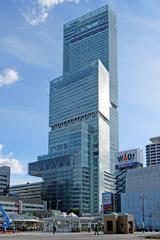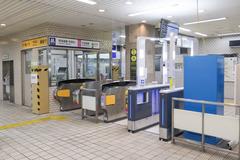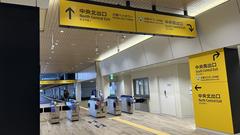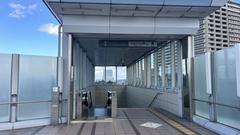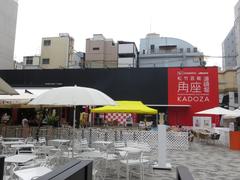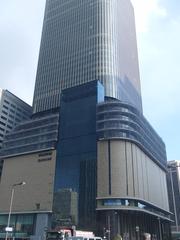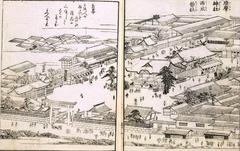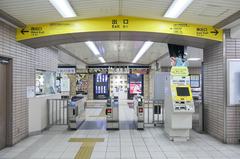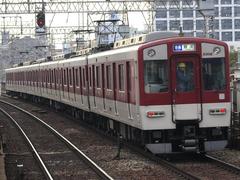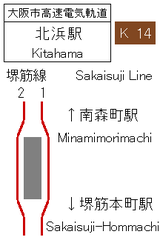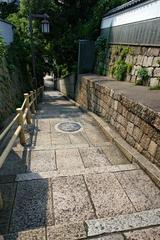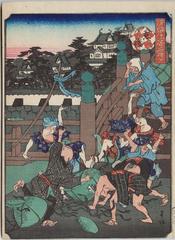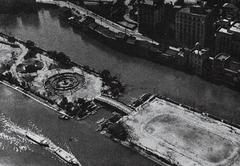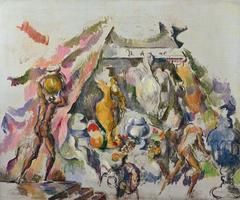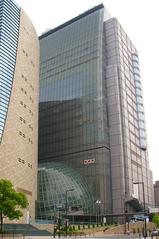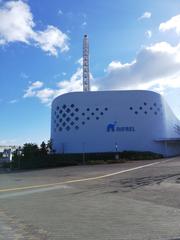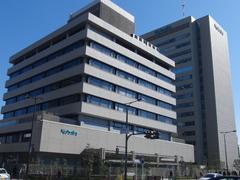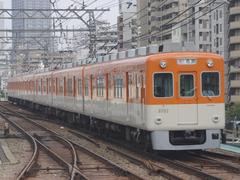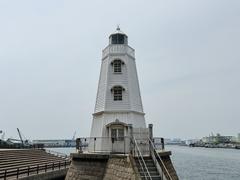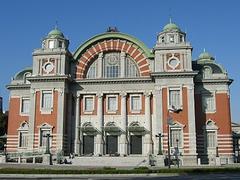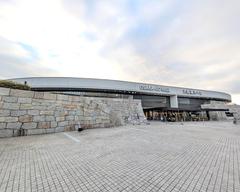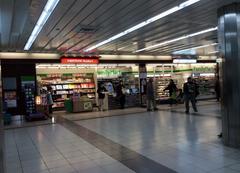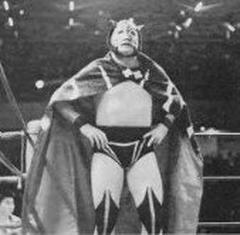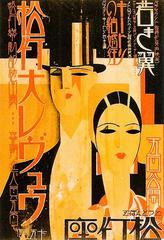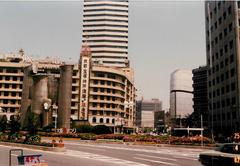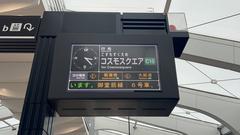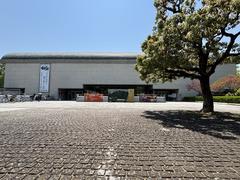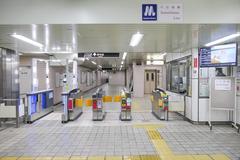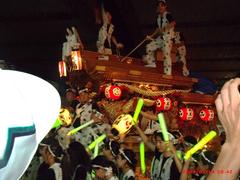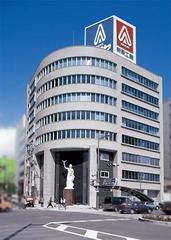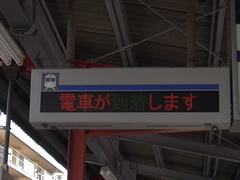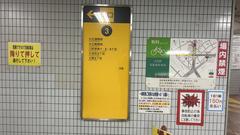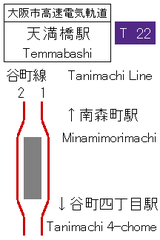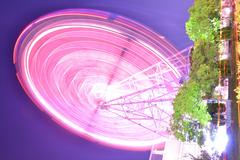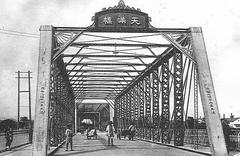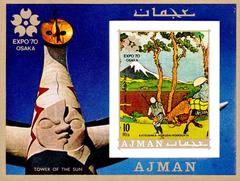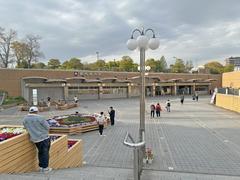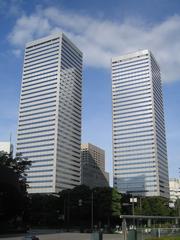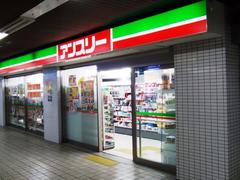Comprehensive Guide to Visiting Osaka, Osaka Prefecture, Japan
Date: 13/08/2024
Captivating Introduction
Welcome to Osaka, where tradition and modernity dance in a harmonious waltz, and every corner whispers a tale of its storied past. Picture this: a city that has transformed from a humble fishing village along the Yodo River in the 5th century to a bustling commercial hub during the Edo period. Imagine walking through streets where ancient shell mounds coexist with towering skyscrapers, and centuries-old temples stand proudly amidst neon lights (Sakura, Wikipedia).
Osaka is not just a destination; it’s an experience—an immersive journey through time and culture. As you wander through its vibrant districts, you’ll encounter iconic landmarks like Osaka Castle, built by the legendary Toyotomi Hideyoshi, and the serene Sumiyoshi Taisha Shrine, a testament to Japan’s ancient Shinto traditions (HistoryHit, Matcha). The city’s resilience is palpable, especially when you consider its rise from the ruins of World War II to become a modern economic powerhouse with a rich cultural tapestry (Sakura).
But Osaka’s charm doesn’t end with its historical grandeur. Dive into the heart of the city, and you’ll find hidden gems like the retro Shinsekai district and the atmospheric Hozenji Yokocho alleyway, where time seems to have stood still. Whether you’re savoring local delicacies at Kuromon Ichiba Market or enjoying panoramic views from the Umeda Sky Building, Osaka promises an adventure like no other (Osaka.com, Wanderlog).
So pack your bags, put on your explorer’s hat, and get ready to uncover the timeless charm of Osaka. Let this guide be your companion as you embark on a journey through the city’s rich history, vibrant culture, and modern marvels.
Table of Contents
- Discovering the Timeless Charm of Osaka, Japan
- Early History and Development
- Osaka Castle: A Golden Legacy
- Sumiyoshi Taisha Shrine: Where Time Stands Still
- Shitennō-ji Temple: The Dawn of Buddhism
- Merchant Culture and the Edo Period
- Rising from the Ashes: Post-WWII Osaka
- UNESCO World Heritage Sites
- Cultural Contributions
- Modern Attractions with Historical Significance
- Visitor Tips
- Dive into the Heart of Osaka: A Cultural Odyssey
- Top Attractions in Osaka, Osaka Prefecture, Japan
- Welcome to Osaka: The City of Contrasts
- Osaka Castle: A Time Machine to the Past
- Universal Studios Japan: Where Movies Come to Life
- Dotonbori: Osaka’s Neon Wonderland
- Shitennoji Temple: Serenity in the City
- Umeda Sky Building: Touch the Sky
- Sumiyoshi Taisha: A Journey Back to Ancient Japan
- Osaka Aquarium Kaiyukan: Dive into the Deep
- Namba Yasaka Shrine: Roar with the Lion
- Tsutenkaku Tower: Osaka’s Beacon of Resilience
- Kuromon Ichiba Market: Feast in ‘Osaka’s Kitchen’
- Nakanoshima Park: A Riverside Retreat
- Tenjinbashisuji Shopping Street: Shop Till You Drop
- Expo ‘70 Commemorative Park: A Legacy of Innovation
- HEP Five Ferris Wheel: Romance in the Sky
- Osaka Museum of History: Journey Through Time
- Practical Tips for Visitors
Discovering the Timeless Charm of Osaka, Japan
Early History and Development
Imagine a small fishing village in the 5th century, nestled along the Yodo River. That’s Osaka for you, strategically placed to become a trade and commerce hub. Fast forward to the Edo period (1603-1868), and Osaka was buzzing with merchants and traders, becoming one of Japan’s major commercial centers thanks to the Tokaido and Nakasendo trading routes. The city’s economy was booming, making it a magnet for people from all over Japan (Sakura).
Osaka Castle: A Golden Legacy
Picture this: towering walls, shimmering gold accents, and a panoramic view of Osaka. That’s Osaka Castle, built in 1583 by Toyotomi Hideyoshi on the ruins of the Ishiyama Honganji Temple. It was meant to be the epicenter of a new, unified Japan. The castle has seen its fair share of drama—destroyed, rebuilt, struck by lightning, and rebuilt again. Today’s version, reconstructed in 1931 and renovated in 1997, offers a peek into history and some stunning views (HistoryHit).
Sumiyoshi Taisha Shrine: Where Time Stands Still
Step into a world that predates Buddhism in Japan at Sumiyoshi Taisha Shrine, founded in the 3rd century. Dedicated to the gods of the sea and sailing, this shrine showcases the unique Sumiyoshi-zukuri architectural style. If you’re lucky enough to visit during the Sumiyoshi Festival, you’ll be in for a treat with vibrant celebrations drawing in around 300,000 people (Matcha).
Shitennō-ji Temple: The Dawn of Buddhism
Shitennō-ji Temple, established in 593 by Prince Shōtoku, is Japan’s oldest Buddhist temple. The complex includes everything from a five-story pagoda to a treasure house brimming with cultural relics. Though it has been rebuilt multiple times, its historical and religious significance remains untarnished (PlanetWare).
Merchant Culture and the Edo Period
Osaka in the Edo period was the definition of hustle and bustle. It was the go-to place for distributing goods across Japan. The city’s merchant culture gave birth to various art forms like kabuki theater and the tea ceremony, emphasizing simplicity and realism often laced with humor. This spirit lives on in modern Osaka’s food scene and comedy acts (Osaka.com).
Rising from the Ashes: Post-WWII Osaka
World War II left Osaka in ruins, but like a phoenix, the city rose from the ashes. Postwar reconstruction efforts transformed Osaka into a key economic center, blending modernity with its rich cultural heritage. Historical sites like Osaka Castle were rebuilt, standing as symbols of the city’s resilience (Sakura).
UNESCO World Heritage Sites
Osaka’s Mozu-Furuichi Kofun Group is a treasure trove of ancient history. Located in Sakai City, these 50 tumuli served as burial mounds for early Yamato emperors. The most famous is the Daisen Kofun, believed to be Emperor Nintoku’s final resting place. This site offers a deep dive into early Japanese civilization (Inside Osaka).
Cultural Contributions
From literature to stand-up comedy (manzai), Osaka has left an indelible mark on Japanese culture. The city’s unique dialect has even influenced modern Japanese. In the 20th century, Osaka became a hotspot for alternative genres like gekiga (dramatic pictures), spreading its cultural logic across Japan (Osaka.com).
Modern Attractions with Historical Significance
Modern Osaka is a delightful mix of the old and new. The Umeda Sky Building offers breathtaking city views, while the Osaka Museum of History takes you on a journey from ancient times to the present. These attractions provide a well-rounded understanding of Osaka’s historical and modern appeal (Wanderlog).
Visitor Tips
For a memorable trip to Osaka, here are some local tips:
- Osaka Castle: Visit early to beat the crowds. The best access is via Morinomiya or Osakajokoen Station (HistoryHit).
- Sumiyoshi Taisha Shrine: Time your visit during the Sumiyoshi Festival for a vibrant cultural experience (Matcha).
- Shitennō-ji Temple: Set aside a few hours to explore the temple complex (PlanetWare).
- Mozu-Furuichi Kofun Group: Combine this with other Sakai City attractions for a full day of exploration (Inside Osaka).
By diving into these rich historical sites and following these tips, you’ll get a deeper appreciation of Osaka’s timeless charm and vibrant culture.
Dive into the Heart of Osaka: A Cultural Odyssey
A Journey Through Time
Osaka isn’t just a city; it’s a living, breathing time capsule that dates back to the Jōmon period (7,000 BCE). Imagine a place where ancient shell mounds, arrowheads, and stone tools whisper tales of early settlers (Wikipedia). Fast forward to the 5th century, and you’ll find Naniwa-zu, a bustling port where traders from Korea, China, and beyond shared not just goods but revolutionary ideas and the seeds of Buddhism (Osaka Info).
Feel the crunch of ancient shells under your feet, smell the tang of the sea breeze as it mingles with incense from distant lands, and hear the clamor of merchants bartering in a cacophony of languages. Can you taste the exotic spices that once filled the air?
The Pulse of Prosperity
Strategically perched on the Seto Inland Sea, Osaka’s veins are its rivers, making it a vital economic hub. Picture the Meiji Restoration in 1868, birthing Osaka Prefecture and propelling it into an industrial titan (Wikipedia). By the early 20th century, Osaka was dubbed the ‘Manchester of the Orient’, a nod to its booming textile industry.
Hidden Gems and Local Secrets
For the intrepid explorer, Osaka offers more than just its famed landmarks. How about a visit to Hozenji Yokocho, a narrow alleyway lined with traditional eateries and the moss-covered Hozenji Temple? Or perhaps a stroll through the retro Shinsekai district, where time seems to have stood still?
Interactive Adventures
Why not embark on a scavenger hunt to discover Osaka’s hidden historical landmarks and culinary delights? Challenge yourself to find the best takoyaki stall or the quirkiest themed café. Each discovery is a step deeper into the heart of the city.
Practical Information with a Twist
Getting around Osaka is a breeze with its efficient public transport system. Picture this: navigating the city is like playing a game of hopscotch, where each station is a new square filled with possibilities. And don’t forget to download the Osaka Amazing Pass for unlimited travel and discounts.
Pop Culture and Seasonal Highlights
Osaka has been the backdrop for many movies, such as ‘Black Rain’ and ‘The Ramen Girl’. It also transforms dramatically with the seasons. Visit in spring for cherry blossoms at Osaka Castle, or in autumn for the vibrant foliage at Minoo Park. Winter brings festive illuminations, while summer is all about fireworks and festivals.
Local Lingo Lessons
Want to impress the locals? Try out some Osaka-ben, the regional dialect. Say ‘ookini’ instead of ‘arigato’ for thank you, and add a playful touch to your conversations. Practice makes perfect, and who knows, you might end up sounding like a true Osakan!
Myth Busting and Surprises
Contrary to popular belief, Osaka is not just about food. It’s a city rich in history, culture, and innovation. Did you know that the first instant noodles were invented here? Or that Osaka is home to the oldest Buddhist temple in Japan, Shitennoji?
Storytelling and Call to Action
Legend has it that Toyotomi Hideyoshi himself oversaw the construction of Osaka Castle, a symbol of the city’s resilience and ambition. As you walk its grounds, imagine the samurai warriors who once defended these walls.
Ready to explore Osaka? Let Audiala be your guide. With interactive maps, insider tips, and personalized itineraries, your adventure awaits. Download the app today and dive into the heart of Osaka!
Top Attractions in Osaka, Osaka Prefecture, Japan
Welcome to Osaka: The City of Contrasts
Welcome to Osaka, where ancient history meets ultramodern sparkle, and where every street corner promises a new adventure. From the regal Osaka Castle to the whimsical streets of Dotonbori, this city has something for everyone. Let’s dive in!
Osaka Castle: A Time Machine to the Past
Imagine stepping into a time machine and landing in 1583. That’s what a visit to Osaka Castle feels like. Built by the legendary Toyotomi Hideyoshi, this castle was pivotal in unifying Japan. Today, its concrete reconstruction from 1931 houses a museum bursting with tales of samurai valor and political intrigue. Ascend to the top floor for breathtaking panoramic views of Osaka, and if you’re visiting in spring, the surrounding park’s cherry blossoms will leave you spellbound. For more details, visit the Osaka Castle official website.
Universal Studios Japan: Where Movies Come to Life
If you’re a movie buff or just a big kid at heart, Universal Studios Japan (USJ) is your playground. Since 2001, it has been whisking visitors into the worlds of Harry Potter, Jurassic Park, and Minions. Don’t miss the seasonal events like Halloween Horror Nights—if you dare! For ticket information and park hours, check the Universal Studios Japan official website.
Dotonbori: Osaka’s Neon Wonderland
Welcome to Dotonbori, where the night never sleeps. This district is the epitome of Osaka’s vibrant nightlife, adorned with neon lights and giant billboards like the iconic Glico Running Man. Sample street food marvels like takoyaki and okonomiyaki, or just wander around soaking in the atmosphere. For more information, visit the Dotonbori official website.
Shitennoji Temple: Serenity in the City
Step into a sanctuary of peace at Shitennoji Temple, founded in 593 AD by Prince Shotoku. Despite its turbulent history of fires and wars, the temple stands as a testament to Japan’s enduring spirituality. Explore the five-story pagoda and the treasure house filled with Buddhist artifacts. For visiting hours and more details, visit the Shitennoji Temple official website.
Umeda Sky Building: Touch the Sky
Architectural wonders don’t get much better than the Umeda Sky Building. With two 40-story towers connected by a ‘Floating Garden Observatory,’ it’s a marvel you have to see to believe. Enjoy 360-degree views of Osaka and indulge in traditional Japanese cuisine at the retro-themed food court. For more information, visit the Umeda Sky Building official website.
Sumiyoshi Taisha: A Journey Back to Ancient Japan
Sumiyoshi Taisha is not just a shrine; it’s a journey into Japan’s ancient past. Founded in the 3rd century and dedicated to sea gods, its unique Sumiyoshi-zukuri architectural style is a rare gem. Visit during the New Year or the Sumiyoshi Matsuri in August for a truly magical experience. For more details, visit the Sumiyoshi Taisha official website.
Osaka Aquarium Kaiyukan: Dive into the Deep
One of the largest aquariums in the world, Osaka Aquarium Kaiyukan is an aquatic wonderland. Home to a whale shark and diverse marine life from the Pacific Rim, it offers an immersive experience you won’t forget. For ticket prices and visiting hours, visit the Osaka Aquarium Kaiyukan official website.
Namba Yasaka Shrine: Roar with the Lion
Namba Yasaka Shrine is famous for its lion-head-shaped stage, believed to ward off evil spirits and bring good luck. Attend one of its vibrant festivals, like the annual Namba Yasaka Festival in January, to experience its true charm. For more information, visit the Namba Yasaka Shrine official website.
Tsutenkaku Tower: Osaka’s Beacon of Resilience
Tsutenkaku Tower, standing tall since 1912 (reconstructed in 1956), symbolizes Osaka’s resilience. Enjoy views from its observation decks and explore the retro Shinsekai district for delicious kushikatsu (deep-fried skewers). For more details, visit the Tsutenkaku Tower official website.
Kuromon Ichiba Market: Feast in ‘Osaka’s Kitchen’
Known as ‘Osaka’s Kitchen,’ Kuromon Ichiba Market has been a food paradise for over 190 years. From fresh seafood to street food delights, it’s a feast for the senses. For more information, visit the Kuromon Ichiba Market official website.
Nakanoshima Park: A Riverside Retreat
Nestled between the Dojima and Tosabori rivers, Nakanoshima Park is a green oasis in the city. Whether you’re enjoying a picnic or a leisurely stroll among its rose gardens, this park offers a tranquil escape. For more details, visit the Nakanoshima Park official website.
Tenjinbashisuji Shopping Street:### Tenjinbashisuji Shopping Street: Shop Till You Drop
Stretching over 2.6 kilometers, Tenjinbashisuji Shopping Street is Japan’s longest shopping arcade. With a mix of traditional and modern shops, it’s the perfect place to hunt for unique souvenirs. For more information, visit the Tenjinbashisuji Shopping Street official website.
Expo ‘70 Commemorative Park: A Legacy of Innovation
Built on the site of the 1970 World Exposition, Expo ‘70 Commemorative Park is a haven of gardens, museums, and the iconic Tower of the Sun. It’s a must-visit for families and history buffs alike. For more details, visit the Expo ‘70 Commemorative Park official website.
HEP Five Ferris Wheel: Romance in the Sky
Situated atop the HEP Five shopping mall, this Ferris wheel offers stunning views of Osaka from a height of 106 meters. Illuminated at night, it’s a romantic spot perfect for couples. For more information, visit the HEP Five official website.
Osaka Museum of History: Journey Through Time
Located near Osaka Castle, the Osaka Museum of History offers a fascinating journey through the city’s past. With life-sized reconstructions and interactive displays, it’s a history lesson like no other. For more details, visit the Osaka Museum of History official website.
Practical Tips for Visitors
- Weather: August in Osaka is hot and humid, with temperatures ranging from 27°C to 33°C (80°F to 91°F). Carry an umbrella or a light raincoat for occasional rain showers.
- Transportation: Osaka has an extensive public transportation system, including trains, subways, and buses. Consider purchasing an Osaka Amazing Pass for unlimited transport and access to many attractions.
- Accommodation: Book accommodations well in advance, especially during peak seasons and festivals, to secure the best rates and availability.
- Local Etiquette: Be mindful of local customs and etiquette, such as removing shoes before entering homes and certain establishments, and being quiet on public transportation.
For more travel tips and information, visit the Osaka Tourism official website.
Call to Action
As your journey through Osaka comes to a close, it’s impossible not to be enchanted by the city’s seamless blend of the old and the new. From the majestic Osaka Castle, which stands as a symbol of the city’s historical legacy, to the bustling streets of Dotonbori, where modern life pulses with energy, Osaka is a testament to Japan’s ability to honor its past while embracing the future (Osaka Castle official website, Osaka Info).
Osaka’s rich cultural heritage is not just confined to its iconic landmarks. It’s in the laughter echoing from a manzai comedy show, the delicate flavors of a traditional tea ceremony, and the vibrant festivities of the Sumiyoshi Festival. The city’s unique dialect and local customs add layers of charm that make every interaction memorable (Osaka.com, Matcha).
Whether you’re exploring the ancient corridors of Shitennō-ji Temple, experiencing the modern thrills of Universal Studios Japan, or simply strolling through the tranquil Nakanoshima Park, Osaka offers a mosaic of experiences that cater to every traveler’s curiosity and passion (PlanetWare, Universal Studios Japan official website).
So, are you ready to dive deeper into the heart of Osaka? Let Audiala be your guide. With its beautifully crafted audio guides, insider tips, and personalized itineraries, Audiala ensures that you uncover the city’s hidden gems and stories, making your exploration truly unforgettable. Download Audiala today and let the adventure begin!
References
- Sakura, n.d., ‘Osaka History and Culture’ Sakura
- Wikipedia, n.d., ‘Osaka’ Wikipedia
- HistoryHit, n.d., ‘Osaka Castle’ HistoryHit
- Matcha, n.d., ‘Sumiyoshi Taisha Shrine’ Matcha
- PlanetWare, n.d., ‘Tourist Attractions in Osaka’ PlanetWare
- Osaka.com, n.d., ‘Cultural History of Osaka’ Osaka.com
- Wanderlog, n.d., ‘Most Historic Buildings and Sites in Osaka’ Wanderlog
- Osaka Info, n.d., ‘Osaka History’ Osaka Info
- Osaka Castle official website, n.d., ‘Osaka Castle’ Osaka Castle official website
- Universal Studios Japan official website, n.d., ‘Universal Studios Japan’ Universal Studios Japan official website















